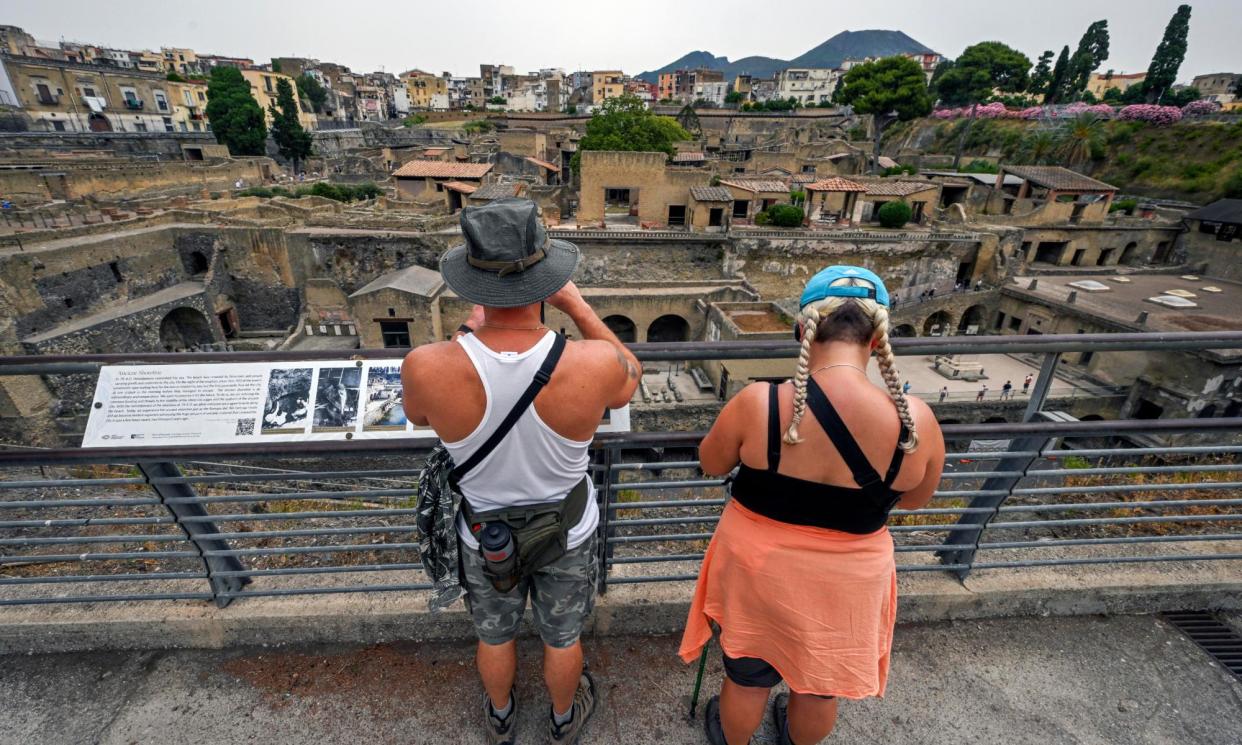Beach buried by eruption of Mount Vesuvius reopens to public after restoration

An ancient Roman beach that was buried by the AD79 eruption of Mount Vesuvius has reopened to the public at Herculaneum archaeological park in southern Italy.
The beach has been reinstated after conservation work in recent years restored its original level, including bringing back sand, which is aimed at giving visitors the experience of walking along the beach almost as it was before the eruption.
Herculaneum is a smaller and less well-known site than nearby Pompeii, and unlike its neighbour, the first victims of Vesuvius were only discovered there during excavations in the 1980s and 90s when the skeletons of more than 300 people were found across several boat sheds, where they were believed to have been sheltering while they waited to be rescued at sea by the army of Pliny the Elder, the Roman naval commander who attempted to save the inhabitants of both cities.
One of the victims came to be known as “ring lady” because of the jewellery found on her fingers.
The remains of a man killed just steps away from the shoreline, which today is a few hundred metres away, were found during excavations in 2021, the first dig at the site in almost 30 years.
“The ancient beach is an extraordinary and unique place in the world,” said Francesco Sirano, the director of the archaeological park. “If we look towards where the sea once was, we become modern explorers of the immense blanket of volcanic flow that covered the city in a few hours, almost sharing the sense of total annihilation.”
Herculaneum, which was rediscovered during the digging of a well in the early 18th century, is said to have been wealthier than Pompeii, and lavish villas decorated with frescoes and mosaic floors – including the House of the Bicentenary, which was found in 1938 – have been excavated.
Other discoveries have included organic matter of fruit and bread as well as wooden furniture and hundreds of charred papyrus scrolls. In April, researchers said they had deciphered passages from a papyrus scroll, which shed light on the final hours of Plato, an important figure in the history of western philosophy.

 Yahoo News
Yahoo News 
